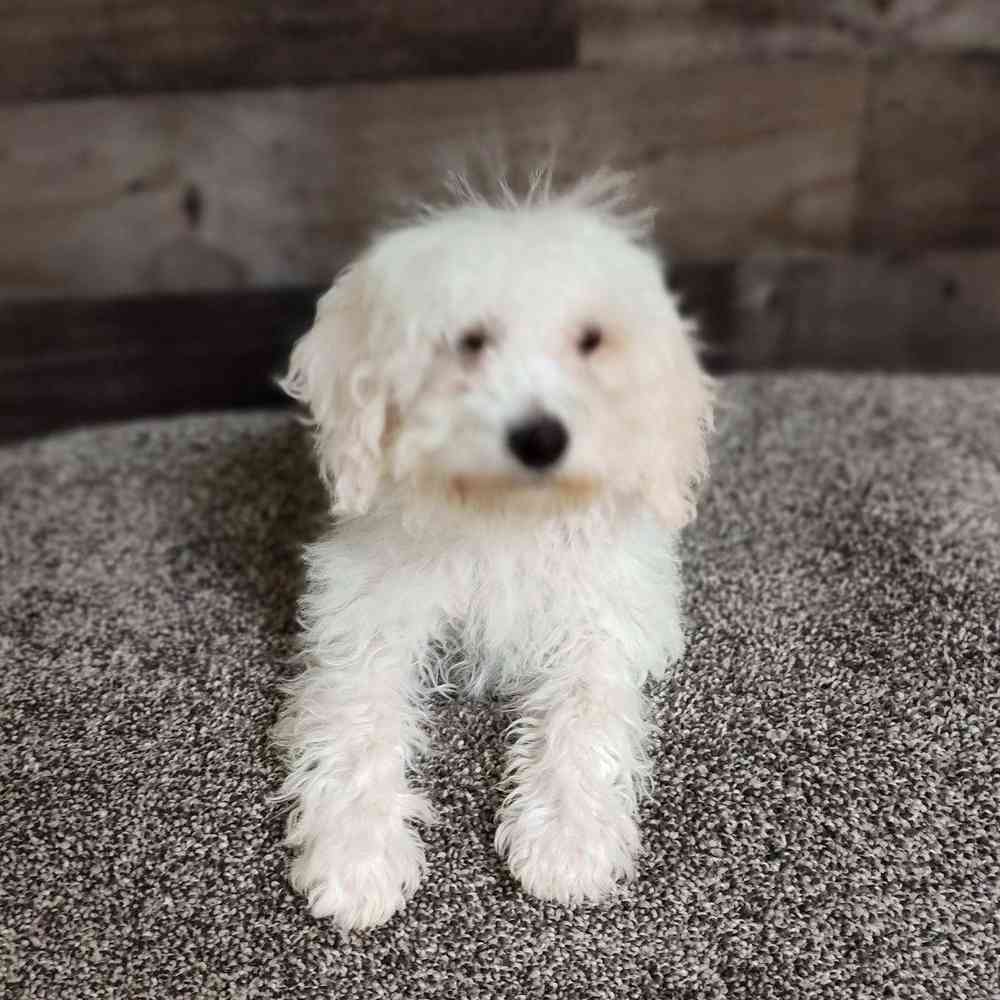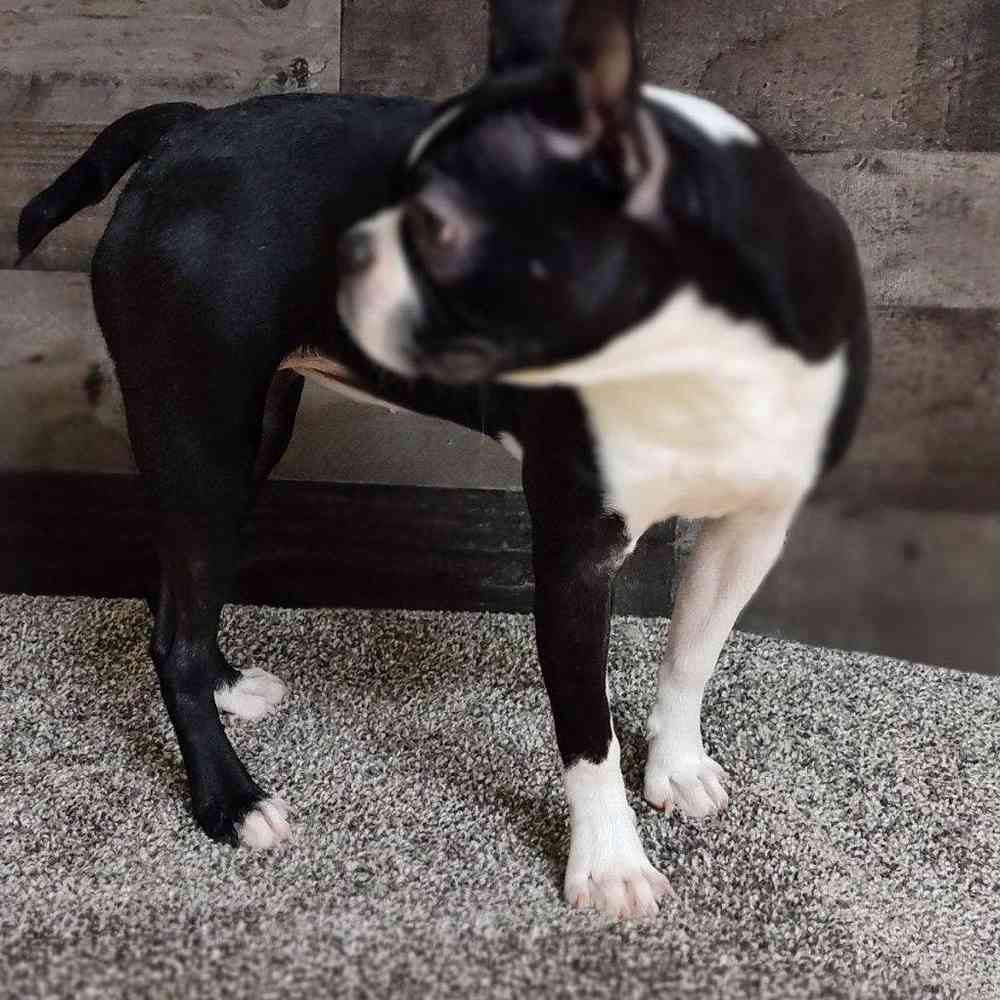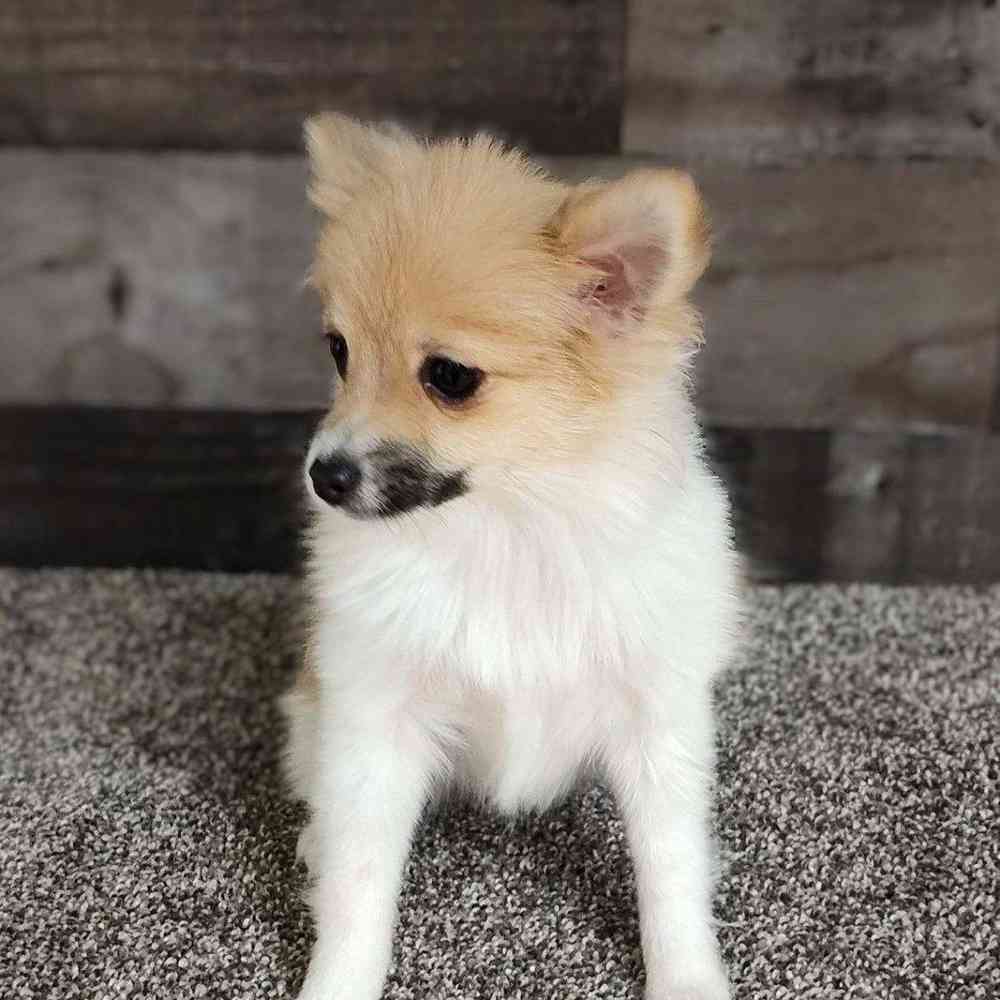
AKC - BL/WH C
Hypoallergenic - Blue Trans
Apartment - Blue Transparent
Bichon Frise
The small but sturdy and resilient Bichon Frise stands among the world’s great “personality dogs.” Since antiquity, these irresistible canine comedians have relied on charm, beauty, and intelligence to weather history’s ups and downs. Bichons are adaptable companions who get on well with other dogs and children. Alert and curious, Bichons make nice little watchdogs—but they are lovers, not fighters, and operate under the assumption that there are no strangers, just friends they haven’t met yet. Their confidence and size make them ideal city dogs. Bichons train nicely and enjoy performing for their loved ones. Finally, there’s the happy-go-lucky Bichon personality that draws smiles and hugs wherever they go.
Puppy Knowledge
Breed Info
Clubs, Registries & Associations
American Canine Association Continental Kennel Club Universal Kennel Club International American Kennel Club United All Breed Registry America's Pet Registry, Inc. United Kennel Club (Based on breed recognition. See store for details on this particular puppy.)
Group
Non-Sporting
Description
Small, 9-12” at the shoulders, weighing anywhere from 10-18 pounds. The Bichon Frise has a sturdy, small body with a long double coat that comes in colors solid white, cream, gray or apricot. The outer coat is long, coarse and curly; the inner coat is soft and thick. When groomed in a puppy or a teddy bear cut, the coat is the same clipped length all over; when in a show cut the coat is kept longer with a round appearance.
Health Awareness
The Bichon Frise has a life expectancy of up to 15 years and is prone to eye staining, cataracts, epilepsy, dislocated kneecaps, liver problems, skin issues and sensitivity to flea bites.
Personality
The Bichon Frise is happy-go-lucky, affectionate, merry, gentle, and sensitive. They are also intelligent, clever, happy to learn and sociable. Teach your Pomeranian good manners and tricks! They naturally love water, so teach your Bichon Frise some water sports. Remember, though, to give your consistent guidance to demonstrate that you are a capable leader, or this breed will feel the need to provide their own leadership that can result in other behavior issues.
Exercise/Energy Level
The Bichon Frise is full of life and active. They need a brisk walk and off leash playing in a safe area for physical exercise. Good at problem solving, this breed also needs mental stimulation. Inadequate mental stimulation can cause this breed to develop other behavior issues, such as destruction.
Additional Information
Grooming Requirements: Requires monthly professional grooming and bathing. Clean the eye area frequently to prevent staining. Coat: Long and curly Shedding: Little to no shedding Hypoallergenic: Yes Apartment Living: Good for apartment living if given sufficient exercise. Lap Dog: Yes Good With Children: Excellent with children but should be socialized at an early age, as with all dogs Good With Other Pets: Generally good with other pets when well socialized at an early age.
Breed Standard
General Appearance
The Bichon Frise is a small, sturdy, white powder puff of a dog whose merry temperament is evidenced by his plumed tail carried jauntily over the back and his dark-eyed inquisitive expression. This is a breed that has no gross or incapacitating exaggerations and therefore there is no inherent reason for lack of balance or unsound movement. Any deviation from the ideal described in the standard should be penalized to the extent of the deviation. Structural faults common to all breeds are as undesirable in the Bichon Frise as in any other breed, even though such faults may not be specifically mentioned in the standard.
Size, Proportion, Substance
Size Dogs and bitches 9½ to 11½ inches are to be given primary preference. Only where the comparative superiority of a specimen outside this range clearly justifies it should greater latitude be taken. In no case, however, should this latitude ever extend over 12 inches or under 9 inches. The minimum limits do not apply to puppies. Proportion--The body from the forward-most point of the chest to the point of rump is ¼ longer than the height at the withers. The body from the withers to lowest point of chest represents ½ the distance from withers to ground. Substance--Compact and of medium bone throughout; neither coarse nor fine.
Head
Expression - Soft, dark-eyed, inquisitive, alert. Eyes are round, black or dark brown and are set in the skull to look directly forward. An overly large or bulging eye is a fault as is an almond shaped, obliquely set eye. Halos, the black or very dark brown skin surrounding the eyes, are necessary as they accentuate the eye and enhance expression. The eye rims themselves must be black. Broken pigment, or total absence of pigment on the eye rims produce a blank and staring expression, which is a definite fault. Eyes of any color other than black or dark brown are a very serious fault and must be severely penalized. Ears are drop and are covered with long flowing hair. When extended toward the nose, the leathers reach approximately halfway the length of the muzzle. They are set on slightly higher than eye level and rather forward on the skull, so that when the dog is alert they serve to frame the face. The skull is slightly rounded, allowing for a round and forward looking eye. The stop is slightly accentuated. Muzzle - A properly balanced head is three parts muzzle to five parts skull, measured from the nose to the stop and from the stop to the occiput. A line drawn between the outside corners of the eyes and to the nose will create a near equilateral triangle. There is a slight degree of chiseling under theeyes, but not so much as to result in a weak or snipey foreface. The lower jaw is strong. The nose is prominent and always black. Lips are black, fine, never drooping. Bite is scissors. A bite which is undershot or overshot should be severely penalized. A crooked or out of line tooth is permissible, however, missing teeth are to be severely faulted.
Neck, Topline, Body
The arched neck is long and carried proudly behind an erect head. It blends smoothly into the shoulders. The length of neck from occiput to withers is approximately 1/3 the distance from forechest to buttocks. The topline is level except for a slight, muscular arch over the loin. Body--The chest is well developed and wide enough to allow free and unrestricted movement of the front legs. The lowest point of the chest extends at least to the elbow. The rib cage is moderately sprung and extends back to a short and muscular loin. The forechest is well pronounced and protrudes slightly forward of the point of shoulder. The underline has a moderate tuck-up. Tail is well plumed, set on level with the topline and curved gracefully over the back so that the hair of the tail rests on the back. When the tail is extended toward the head it reaches at least halfway to the withers. A low tail set, a tail carried perpendicularly to the back, or a tail which droops behind is to be severely penalized. A corkscrew tail is a very serious fault.
Forequarters
Shoulders--The shoulder blade, upper arm and forearm are approximately equal in length. The shoulders are laid back to somewhat near a forty-five degree angle. The upper arm extends well back so the elbow is placed directly below the withers when viewed from the side. Legs are of medium bone; straight, with no bow or curve in the forearm or wrist. The elbows are held close to the body. The pasterns slope slightly from the vertical. The dewclaws may be removed. The feet are tight and round, resembling those of a cat and point directly forward, turning neither in nor out. Pads are black. Nails are kept short.
Hindquarters
The hindquarters are of medium bone, well angulated with muscular thighs and spaced moderately wide. The upper and lower thigh are nearly equal in length meeting at a well bent stifle joint. The leg from hock joint to foot pad is perpendicular to the ground. Dewclaws may be removed. Paws are tight and round with black pads.
Coat
The texture of the coat is of utmost importance. The undercoat is soft and dense, the outercoat of a coarser and curlier texture. The combination of the two gives a soft but substantial feel to the touch which is similar to plush or velvet and when patted springs back. When bathed and brushed, it stands off the body, creating an overall powder puff appearance. A wiry coat is not desirable. A limp, silky coat, a coat that lies down, or a lack of undercoat are very serious faults. Trimming--The coat is trimmed to reveal the natural outline of the body. It is rounded off from any direction and never cut so short as to create an overly trimmed or squared off appearance. The furnishings of the head, beard, moustache, ears and tail are left longer. The longer head hair is trimmed to create an overall rounded impression. The topline is trimmed to appear level. The coat is long enough to maintain the powder puff look which is characteristic of the breed.
Color
Color is white, may have shadings of buff, cream or apricot around the ears or on the body. Any color in excess of 10% of the entire coat of a mature specimen is a fault and should be penalized, but color of the accepted shadings should not be faulted in puppies.
Gait
Movement at a trot is free, precise and effortless. In profile the forelegs and hind legs extend equally with an easy reach and drive that maintain a steady topline. When moving, the head and neck remain somewhat erect and as speed increases there is a very slight convergence of legs toward the center line. Moving away, the hindquarters travel with moderate width between them and the foot pads can be seen. Coming and going, his movement is precise and true.
Temperament
Playful, Curious, Peppy
Overview
About
A good-size Bichon will stand a shade under a foot tall at the shoulder. The breed’s glory is a white hypoallergenic coat, plush and velvety to the touch, featuring rounded head hair that sets off the large, dark eyes and black leathers of the nose and lips. Bichons are adaptable companions who get on well with other dogs and children. Alert and curious, Bichons make nice little watchdogs—but they are lovers, not fighters, and operate under the assumption that there are no strangers, just friends they haven’t met yet. Their confidence and size make them ideal city dogs. Bichons train nicely and enjoy performing for their loved ones. Finally, there’s the happy-go-lucky Bichon personality that draws smiles and hugs wherever they go.
History
Bichons are a member of the clan of little white dogs formally known as Barbichon types. (These also include the Bolognese, Havanese, and Maltese.) It is thought that these ancient breeds began their modern development on Tenerife, the largest of the Canary Islands. One of these breeds became so popular with the island’s sailors that it was known as the Bichon Tenerife, the primary ancestor of today’s Bichon Frise. The breed’s close association with European nobles began sometime in the 13th century. Most notably, they endeared themselves to the royal courts of Spain, Italy, and France, and came into their own during the Renaissance. With the advent of the French Revolution in 1789, the Bichon’s days as the pampered and perfumed lapdog of aristocrats came to a rude end. One by one the breed’s benefactors were trotted off to prison and the guillotine, and their Bichons lost their positions of privilege. Many were turned out into the street to fend for themselves. Street entertainers took in the bright, agile dogs and trained them to coax a coin or two from passersby with their antics. Soon, the Bichon was earning his keep as a circus performer. Trainable, impossibly cute, and always at their best when in the spotlight, Bichons were excellent candidates for showbiz success. In the 20th century Bichons again faced hard times because of the shortages and austerities brought on by the two world wars. And again, many Bichons found themselves out in the cold. Thanks to a few fanciers who gathered Bichons off the streets of France and Belgium, the breed survived and was recognized in France under the auspices of the Societé Centrale Canine in1933 as the Bichon a Poil Frisé—the “Bichon of the curly hair.” The Bichon Frise Club of America was founded at San Diego in 1964. The AKC accepted the Bichon into the Miscellaneous class in 1971, and full breed recognition in the Non-Sporting Group came two years later.
Standard
The Bichon Frise is a small, sturdy, white powder puff of a dog whose merry temperament is evidenced by his plumed tail carried jauntily over the back and his dark-eyed inquisitive expression. This is a breed that has no gross or incapacitating exaggerations and therefore there is no inherent reason for lack of balance or unsound movement. Any deviation from the ideal described in the standard should be penalized to the extent of the deviation. Structural faults common to all breeds are as undesirable in the Bichon Frise as in any other breed, even though such faults may not be specifically mentioned in the standard.
Nutrition
The Bichon Frise should do well on a high-quality dog food, whether commercially manufactured or home-prepared with your veterinarian’s supervision and approval. Any diet should be appropriate to the dog’s age (puppy, adult, or senior). Some dogs are prone to getting overweight, so watch your dog’s calorie consumption and weight level. Treats can be an important aid in training, but giving too many can cause obesity. Learn about which human foods are safe for dogs, and which are not. Check with your vet if you have any concerns about your dog’s weight or diet. Clean, fresh water should be available at all times.
Grooming
Bichons should be brushed at least two or three times a week, but every day is best. They need a bath and a clipping at least once a month. Owners who show their Bichons learn to do this, but most pet owners take their Bichon to the groomer every four to six weeks. The Bichon is considered to be relatively hypoallergenic, as the breed sheds very little because the shed hair is caught up in the undercoat. That shed hair has to be brushed out to prevent mats from forming. As with all breeds, the Bichon’s nails should be trimmed regularly as well.
Exercise
The Bichon is classified as “somewhat active,” but that’s an average. Long stretches of calm are interspersed with brief bursts of high activity, often just running through the house or around the yard. Daily play sessions, in addition to walks, are required. Another dog can be a fine exercise companion, but the Bichon will still need quality playtime with his owner. A fenced-in backyard is a good idea; Bichons are surprisingly fast, and if one makes a dash for freedom, he may be difficult to catch or to call back to you. Many Bichons enjoy participating in obedience, agility, and rally competitions.
Training
As with all breeds, early socialization and puppy training classes are recommended. Bichons have a reputation for being difficult to housebreak. In every other respect, however, they are very easy to train. For example, Bichons love to perform tricks and learn new ones quickly. They respond very well to training based on positive rewards, rather than harsh or negative methods. A Bichon needs to be with his family, and undesirable behaviors are likely to result if he is regularly left alone for long periods of time.
Health
Bichons are generally healthy dogs, and a responsible breeder will screen breeding stock for health conditions such as allergies, bladder infections, luxating patella, and cataracts and other eye diseases. Bichons may experience early tooth loss or complications from gum infection if dental care and regular tooth brushing are not a priority. To avoid ear infections, regular ear cleaning is recommended.











